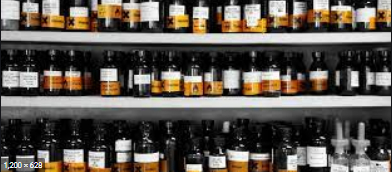38 Days: Converting from Purchasing Units of Measure to Pounds Part 2: Part-specific conversion factors
Start of Week 4…you should be in the midst of data cleanup and probably hoping to finish that up by the end of this week
So now we get to the interesting side of conversion factors: the ones that you can’t look up in a table of conversion factors. There are 2 broad types of these:
Container-specific but convert to standard units of measure (for example, Case of 12-32ounce bottles)
Combination of containers but they all point back to a standard conversion factor. That’s the example shown above, where cans of paint convert via a multiplier and a volumetric unit of measure, ounces
Part-number specific: Each part number will need its own conversion factor (examples I’ve encountered, Annual Total, Bag, Bottle, Box, Bucket, Can, Drum, Each, Jar, Piece, Roll, Syringe, Wooden Spool, you will encounter many others)
These are truly part-specific unit of measure, and for which the same unit of measure (“Each”, “Piece”) is likely to have different conversion factors between different part numbers
Remember that you will eventually need to know what type of container the material is received in if it turns out to be reportable, so now is a good time to capture that if it’s part of your Purchasing information (Plastic bottle 32oz, for example, or Metal Drum 55gal)
We managed both types of conversion factors in a single table, SDS/PartNumber/ContainerDescription. One of the fields in that table was a “To Units” field, which in our case needed to be Gallons or Pounds, but which could be any standard units of measures (ones you can look up in a conversion factor table.
We’ll address Kits in a separate post, they’re a special case but the same conversion factor cases apply.
Community outreach: How do you implement this at your facility? What method do you use for tracking/associating the information? What has been the shortest workflow path for you?
Michigan EGLE links from first and second webinars of 2022 SARA 312 virtual training courses:
I’m keeping these links for awhile because they are so useful. I’ll post the session 3 recording info when it becomes available. You can sign on and listen even if you didn’t sign up for the webinar series.
RECORDING LINK FOR SESSION 2: Wed Jan 19, 2022.
Really good example on batteries. This is the “in the weeds” how to conduct your threshold determinations episode: https://attendee.gotowebinar.com/recording/4027906237723673347
I talked to Mike Young, one of the presenters, right after the first webinar. He said that it’s not unusual for them to take phone calls from people from other states (with the warning to confirm that your state doesn’t have differences in their requirements compared to Michigan).
RECORDING LINK FOR SESSION 1:
https://attendee.gotowebinar.com/recording/7957790593170499843
PRESENTATION: (I wasn’t able to attach a copy of the presentation, email the link below and they will send it to you)
SARA TITLE III – TIER II REPORTING WEBSITE: http://www.michigan.gov/sara
MICHIGAN FACILITIES’ GUIDE TO SARA TITLE III: https://www.michigan.gov/documents/deq/deq-oea-saraguidebook_509720_7.pdf
CONTACT INFORMATION:
Mike Young and Adam Pohl
517-284-7272
Michigan EGLE SARA 312 virtual training courses for Jan 2022
#SARA312 #SARATierII #SARATier2 #EPCRA #EGLE #March1EPAReportDeadline #Tier2Training



